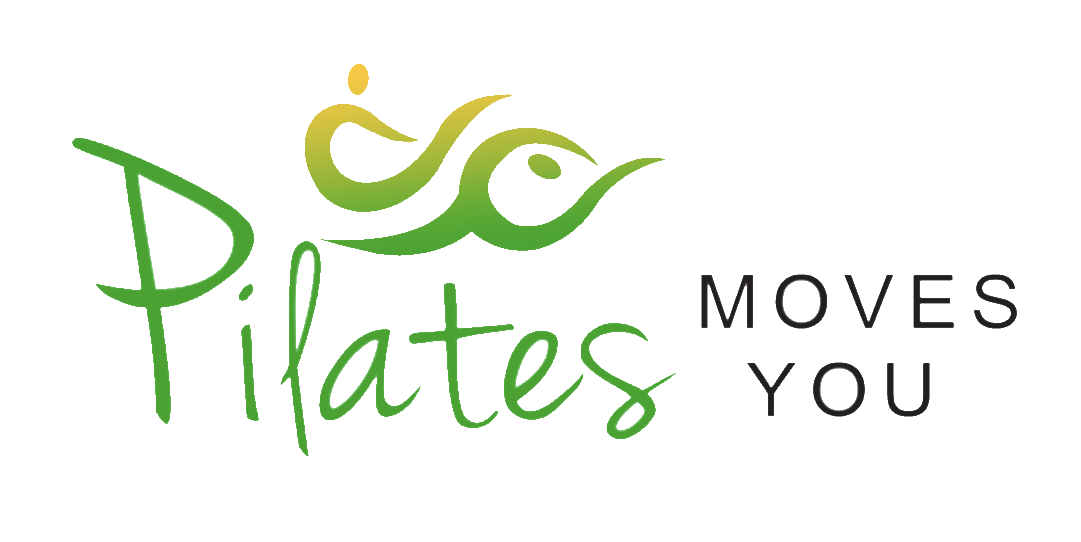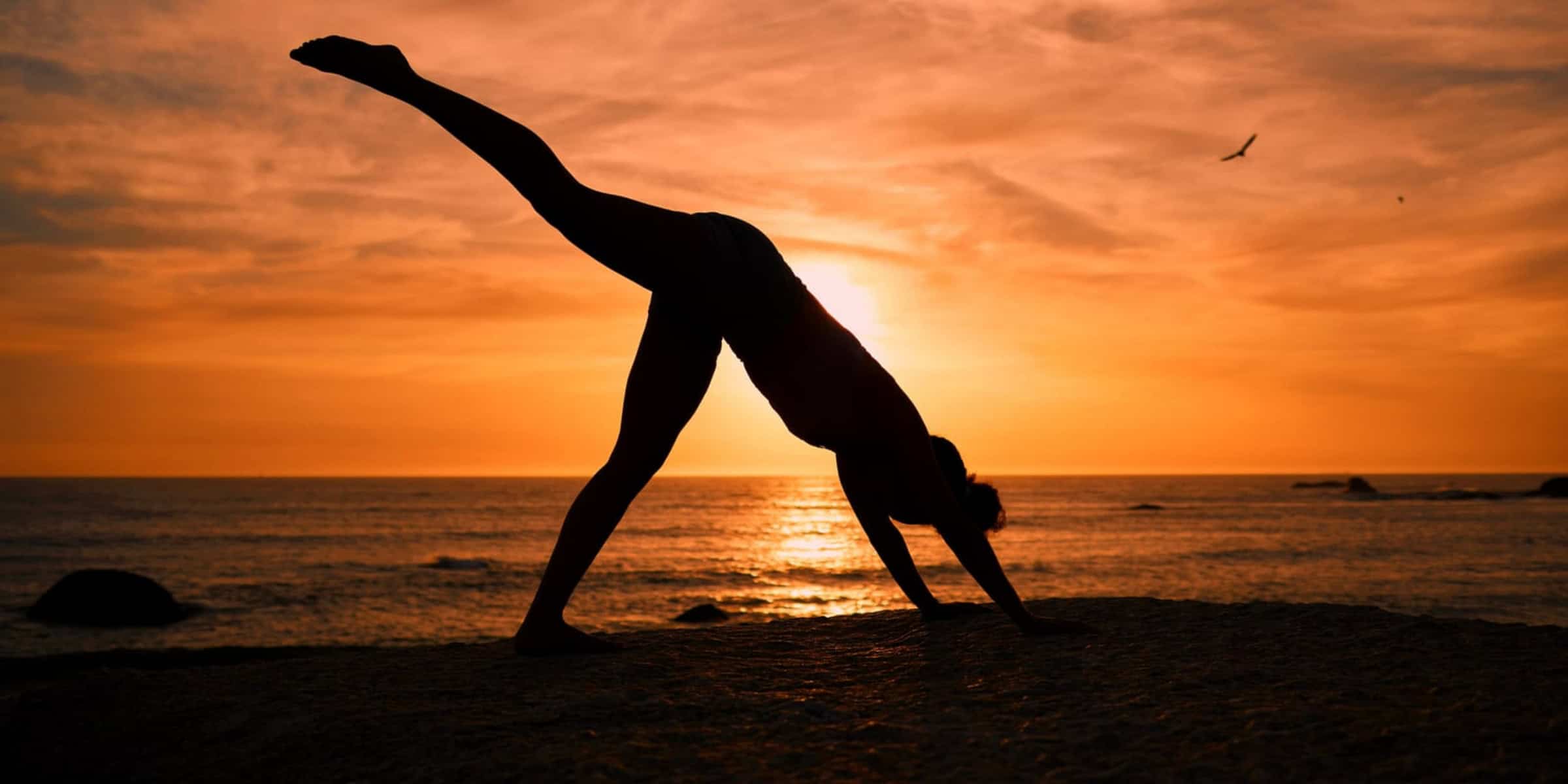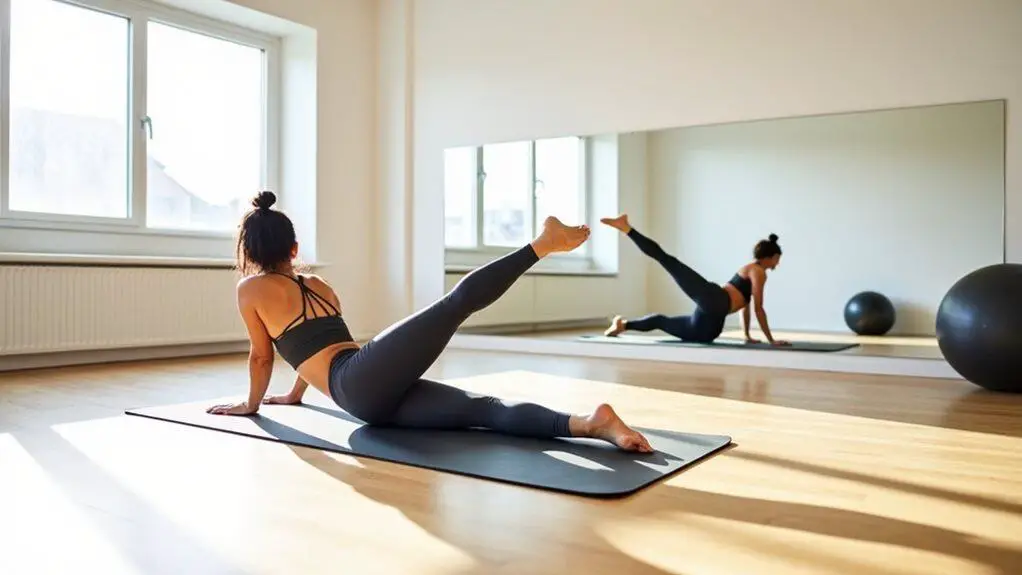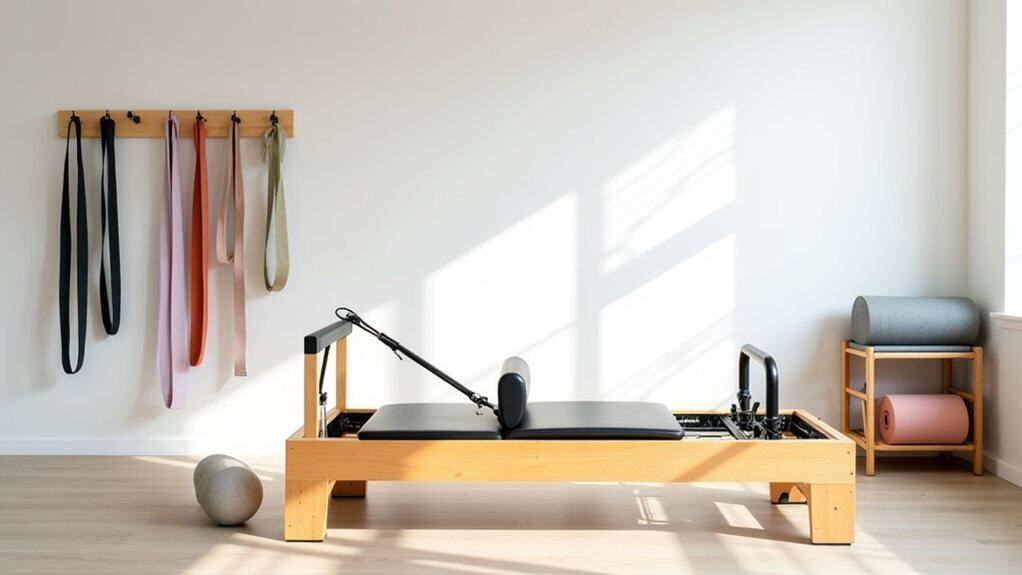Deep within the elegant dance studios and serene gyms lies a discipline that promises grace, strength, and balance. Like the intricate art of chiseling a masterpiece from marble, it beckons those who wish to carve their physique into a semblance of poise and power.
Pilates is an effective method to sculpt lean legs. Pilates strengthens and tones the muscles without adding bulk through targeted exercises like the leg circle, side kick series, and standing leg lifts. The practice emphasizes alignment, balance, and flexibility, leading to slender and strong legs.
As we delve into this realm, we explore the transformative potential of Pilates in sculpting legs that embody both form and function, blending the ethereal with the tangible.
The Foundations of Pilates Leg Work
Pilates, at its core, is a holistic approach that seamlessly combines the mind and body to foster physical well-being. When sculpting lean legs, understanding its foundational principles is vital. One of the primary tenets is alignment and posture. Ensuring correct alignment means the appropriate muscles are engaged during each exercise, while proper posture facilitates effective muscle targeting.
Additionally, despite focusing on the legs, Pilates continually underscores the importance of a robust core. This central strength provides stability that benefits the legs, ensuring they’re activated correctly. Pilates emphasizes controlled, intentional movements, unlike other exercises relying on momentum. This precision ensures deeper and more consistent muscle engagement in the legs, yielding better toning.
But strength isn’t the only aim; flexibility is equally prioritized. Achieving long, lean muscles requires a balance of strengthening and lengthening, hence the integration of stretching exercises. Finally, the mind-body connection in Pilates is indispensable. This mindfulness fosters a deep awareness of every muscle’s function and feeling, making leg exercises more effective. In summary, the foundations of Pilates leg work are a blend of control, flexibility, strength, and awareness, setting the groundwork for beautifully sculpted legs.
Key Pilates Moves for Toned Thighs and Calves
Pilates offers a plethora of exercises designed specifically to target and tone the muscles of the legs. Focusing on the thighs and calves, there are several key moves that, when performed with consistency and precision, can lead to beautifully sculpted legs:
- The Leg Circle: This exercise is a staple in Pilates. Lying on your back with one leg extended towards the ceiling, you’ll circle the leg in controlled movements. This challenges the hip joint’s range of motion and tones the entire upper leg.
- Side Kick Series: Performed lying on one’s side, this series includes various leg lifts and pulses that target both the inner and outer thighs. The range of movements strengthens and tones while also enhancing hip mobility.
- Standing Leg Lifts: Using the support of a barre or chair, this move engages the back of the thigh and calf muscles. Lifting the leg behind while keeping the core engaged ensures that the hamstrings and calves get a rigorous workout.
- Pilates V: A subtle but effective move, the Pilates V is performed standing with heels together and toes about 45 degrees apart. Rising onto the balls of the feet activates the calves while lowering down with control engages the thighs.
- Scissors: Lying on your back, you’ll raise both legs to the ceiling. Holding one leg towards you while extending the other out challenges the thighs and hip flexors, giving them a deep stretch and toning effect.
- Heel Beats: Lying face down, with the legs extended straight out and slightly lifted, you’ll rapidly beat the heels together and apart. This targets the inner and outer thighs dynamically.
When incorporated into a routine and performed precisely, these exercises can lead to toned thighs and calves—as always, ensuring proper form and alignment is essential to maximize the benefits and avoid any potential injury.
Integrating Breath and Movement for Maximum Sculpting
Breathing, often taken for granted, assumes a pivotal role in the realm of Pilates. It’s more than just an involuntary act; it’s a dynamic tool that amplifies the power of every movement. By integrating breath with motion, practitioners ensure muscles are sufficiently oxygenated and create a deeper connection with their body, enhancing the sculpting process.
Deep and intentional breathing contracts the core muscles, adding stability and power during leg exercises. This core activation leads to more intense muscle engagement when paired with leg movements. Furthermore, conscious breathing keeps the mind attuned to the body’s nuances, promoting precise and controlled movements essential for effective muscle targeting.
It also helps alleviate muscle tension; by exhaling during the strenuous parts of an exercise, practitioners can release any built-up tension, allowing for smoother transitions and movements. Additionally, the rhythmic nature of breathing can set a pace for the workout, establishing a flow that can be both meditative and motivating.
Thus, the intertwining of breath and movement in Pilates doesn’t just enhance physical performance and fosters a deeper sense of mindfulness and connection, setting the stage for optimal sculpting outcomes.
Tips and Modifications for All Skill Levels
Pilates is a versatile practice that can be adapted to cater to individuals across various skill levels. Whether you’re a beginner just stepping into this realm or an advanced practitioner seeking to refine your technique, it’s essential to ensure that exercises are effective and safe. Here are some tips and modifications to make Pilates leg workouts accessible and challenging for all:
- Start with the Basics: Especially for beginners, it’s crucial to grasp the fundamental movements and postures before diving into complex routines. Prioritize mastering alignment, core engagement, and the basics of breathwork.
- Use Props: Incorporating props like Pilates balls, resistance bands, and the magic circle can increase the challenge or offer support, depending on the exercise. For instance, a band can add resistance to leg lifts, while a ball can assist with balance during standing exercises.
- Modify Range of Motion: Beginners or those with limited mobility can reduce the range of motion in exercises. Over time, as strength and flexibility improve, they can gradually increase the range to challenge themselves.
- Adjust Repetitions: Instead of pushing through a high number of repetitions from the get-go, start with a manageable number and increase gradually. Advanced users can up the count or add weights to enhance the challenge.
- Mindful Progression: Rather than rushing through levels, progress at a pace that feels right for you. Ensure you’re comfortable and confident with current exercises before moving on to more advanced ones.
Listen to Your Body: Regardless of skill level, staying attuned to your body’s signals is paramount. If a movement causes pain or extreme discomfort, it’s a sign to adjust or skip that particular exercise.
- Seek Guidance: Consider consulting with a certified Pilates instructor when starting or introducing new modifications. They can offer personalized advice, ensuring that exercises are performed with the correct form.
- Stay Consistent: Regardless of where one starts, consistency is key. Regular practice, even if it’s just a few times a week, can lead to noticeable improvements in strength, flexibility, and muscle tone.
Pilates, with its adaptable nature, truly is a practice for everyone. By considering these tips and making necessary modifications, practitioners of all skill levels can enjoy the benefits and work towards sculpted lean legs.
Sources:
https://www.livestrong.com/slideshow/1011895-pilates-instructors-secrets-long-lean-legs/
https://blog.alomoves.com/movement/the-best-pilates-exercises-for-strong-sculpted-legs
https://womensfitness.co.uk/workouts/best-pilates-leg-exercises/




